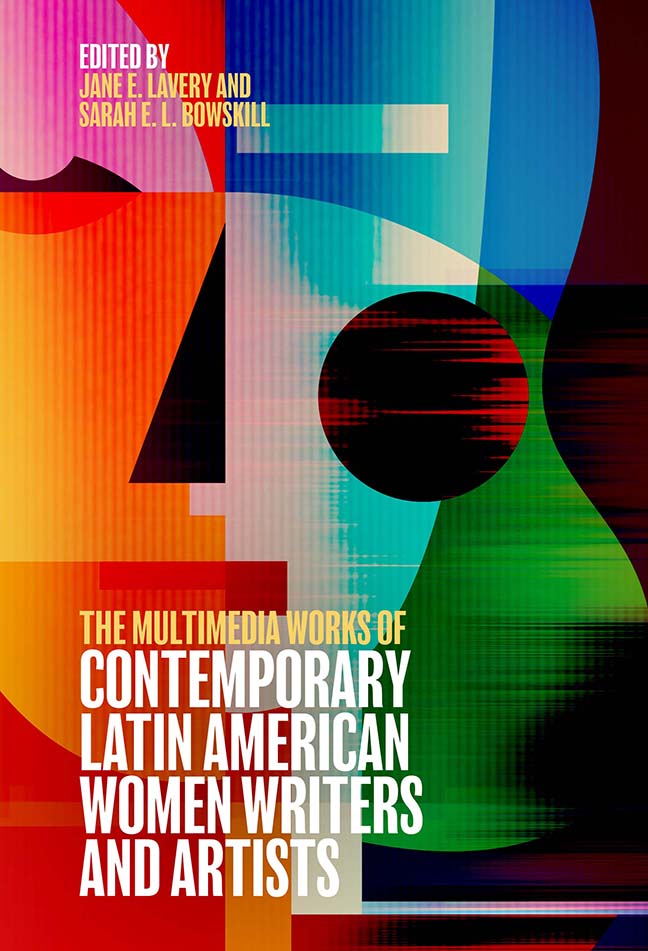Book contents
- Frontmatter
- Contents
- List of Illustrations
- List of Contributors
- Acknowledgments
- Introduction: A Crosscurrent of Contemporary Latin American Women Multimedia Writers and Artists
- 1 The Transliterary: The Novel and Other Multimedia Horizons Beyond (and Close to) the Textual
- 2 Commentary on Fe/males: Sieges of the Post Human (Transmedia Installation)
- 3 An Anthropophagic Ch’ixi Poetics
- 4 My Relationship with Artistic Creation Began with Words
- 5 Imagetext
- 6 Voices/Bodies
- 7 Redefining Meaning: The Interweaving of the Visual and Poetic
- 8 The Territory Is Home
- 9 Reflections on a Multimedia Practice
- 10 Digital Weaving
- 11 Eli Neira, Regina José Galindo, and Ana Clavel: “Polluting” Corporealities and Intermedial/Transliterary Crossings
- 12 The Digital Condition: Subjectivity and Aesthetics in “Fe/males” by Eugenia Prado Bassi
- 13 The Transmedia, Post-Medium, Postnational, and Nomadic Projects of Pilar Acevedo, Rocío Cerón, and Mónica Nepote
- 14 The Art of the Hack: Poets Carla Faesler and Mónica Nepote and Booktuber Fátima Orozco
- 15 The Places of Pain: Intermedial Mode and Meaning in Via Corporis by Pura López Colomé and Geografía del dolor by Mónica González
- 16 Words, Memory, and Space in Intermedial Works by Gabriela Golder and Mariela Yeregui
- 17 Fungibility and the Intermedial Poem: Ana María Uribe, Belén Gache, and Karen Villeda
- 18 Hypertext and Biculturality in Two Autobiographical Hypermedia Works by Latina Artists Lucia Grossberger Morales and Jacalyn Lopez Garcia
- 19 Dialogues Across Media: The Creation of (New?) Hybrid Genres by Belén Gache and Marina Zerbarini
- Bibliography
- Index
- Tamesis
18 - Hypertext and Biculturality in Two Autobiographical Hypermedia Works by Latina Artists Lucia Grossberger Morales and Jacalyn Lopez Garcia
Published online by Cambridge University Press: 17 December 2023
- Frontmatter
- Contents
- List of Illustrations
- List of Contributors
- Acknowledgments
- Introduction: A Crosscurrent of Contemporary Latin American Women Multimedia Writers and Artists
- 1 The Transliterary: The Novel and Other Multimedia Horizons Beyond (and Close to) the Textual
- 2 Commentary on Fe/males: Sieges of the Post Human (Transmedia Installation)
- 3 An Anthropophagic Ch’ixi Poetics
- 4 My Relationship with Artistic Creation Began with Words
- 5 Imagetext
- 6 Voices/Bodies
- 7 Redefining Meaning: The Interweaving of the Visual and Poetic
- 8 The Territory Is Home
- 9 Reflections on a Multimedia Practice
- 10 Digital Weaving
- 11 Eli Neira, Regina José Galindo, and Ana Clavel: “Polluting” Corporealities and Intermedial/Transliterary Crossings
- 12 The Digital Condition: Subjectivity and Aesthetics in “Fe/males” by Eugenia Prado Bassi
- 13 The Transmedia, Post-Medium, Postnational, and Nomadic Projects of Pilar Acevedo, Rocío Cerón, and Mónica Nepote
- 14 The Art of the Hack: Poets Carla Faesler and Mónica Nepote and Booktuber Fátima Orozco
- 15 The Places of Pain: Intermedial Mode and Meaning in Via Corporis by Pura López Colomé and Geografía del dolor by Mónica González
- 16 Words, Memory, and Space in Intermedial Works by Gabriela Golder and Mariela Yeregui
- 17 Fungibility and the Intermedial Poem: Ana María Uribe, Belén Gache, and Karen Villeda
- 18 Hypertext and Biculturality in Two Autobiographical Hypermedia Works by Latina Artists Lucia Grossberger Morales and Jacalyn Lopez Garcia
- 19 Dialogues Across Media: The Creation of (New?) Hybrid Genres by Belén Gache and Marina Zerbarini
- Bibliography
- Index
- Tamesis
Summary
I first discovered the work of Lucia Grossberger Morales and Jacalyn Lopez Garcia in 2010 in the course of my research on Latin(o) American digital cultural production. Inevitably, I found their work via a Google search whose terms I can only faintly recall – I think I was looking for materials to do with cyberfeminism and/or the discourse of mestizaje (racial and cultural mixing). I could see from what I found – their artists’ websites and links to individual projects – that lots of their work fitted under the rubric of digital art, and some of it also had an autobiographical narrative component. The projects selected for study in this chapter, Grossberger Morales's Sangre Boliviana (1994) and Lopez Garcia's Glass Houses: A Tour of American Assimilation from a Mexican-American Perspective (1997), are really fascinating early incursions into hyperlinked forms of digital art/literature (more precisely, they are hypermedia narratives), intended for distribution and exhibition either via CD-ROM or via the Internet itself.
While “many authors use the terms ‘hypertext’ and ‘hypermedia’ interchangeably” (Schoonmaker), hypermedia refers more specifically to “a method of structuring information in different media” where those different “chunks” of media are “connected in the same way as a hypertext” and its particular “hyperlinking” function that connects different textual “lexia” (OED, qtd in Schoonmaker). Both concepts were coined by Ted Nelson in the 1960s. Today, hypermedia forms the lifeblood of the Internet, though most criticism still tends to discuss “hypertext” as the overarching paradigm, in reference to the Hypertext Markup Language that underpins all such materials. Both hypertext and hypermedia may link materials so as to convey a narrative arc, or at least loose paratactical relationships that the reader/viewer must actively try to decipher (cf. Sorapure).
It is in this exclusively digital sense that I originally set out to explore these works’ “multimedia” nature. Indeed, in purely digital terms, the fact that they combine different media is quite inconsequential. As Jean-Pierre Balpe notes, “Today a large number of artworks are regularly produced with computers and digital tools,” one of the consequences of which is the marked tendency that “these works are multimedia,” combining a wide variety of different textual, graphic, and audiovisual materials. Nonetheless, Balpe goes on to argue that, “more interesting is that today all these perceptive differences are only appearances and that, in fact, in a hypermedia work they all belong to the same system of digital codification” (245).
- Type
- Chapter
- Information
- Publisher: Boydell & BrewerPrint publication year: 2023

